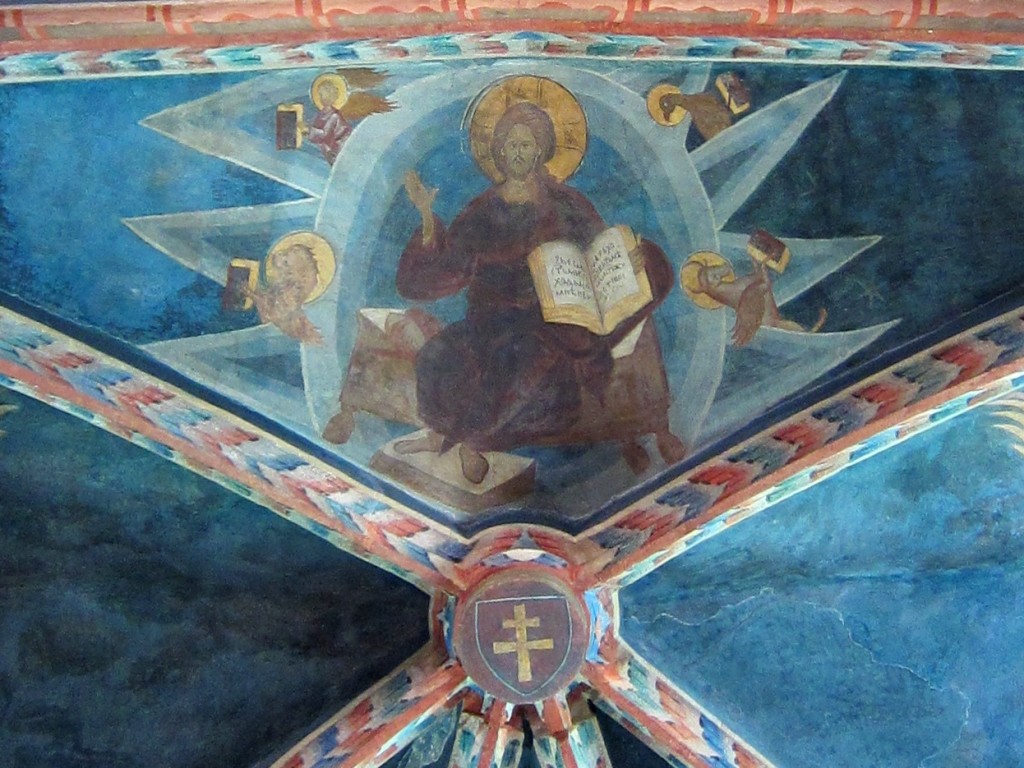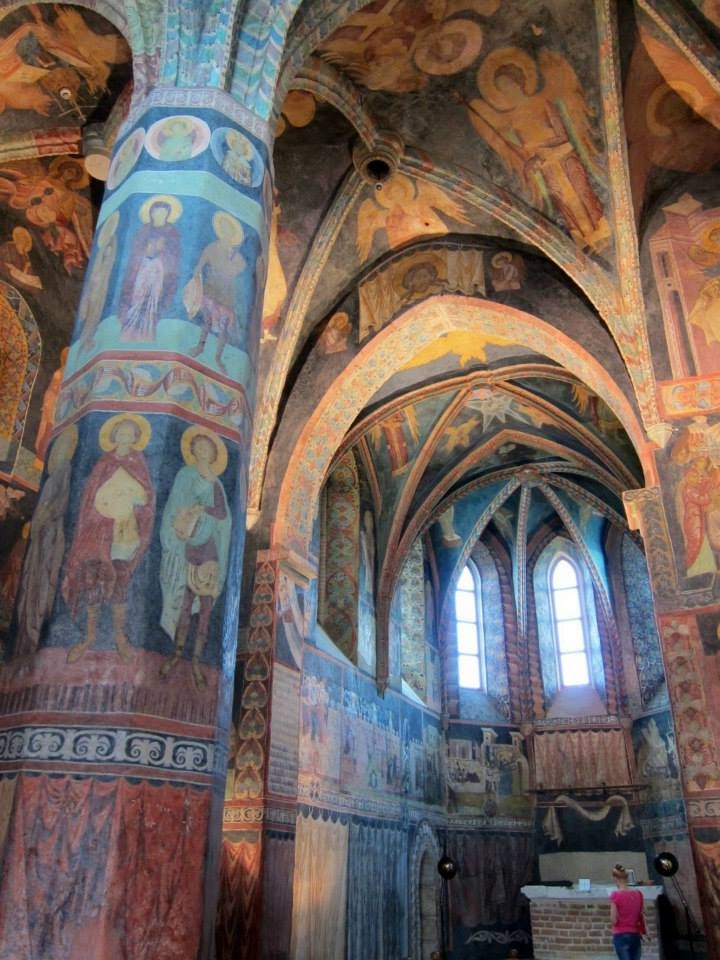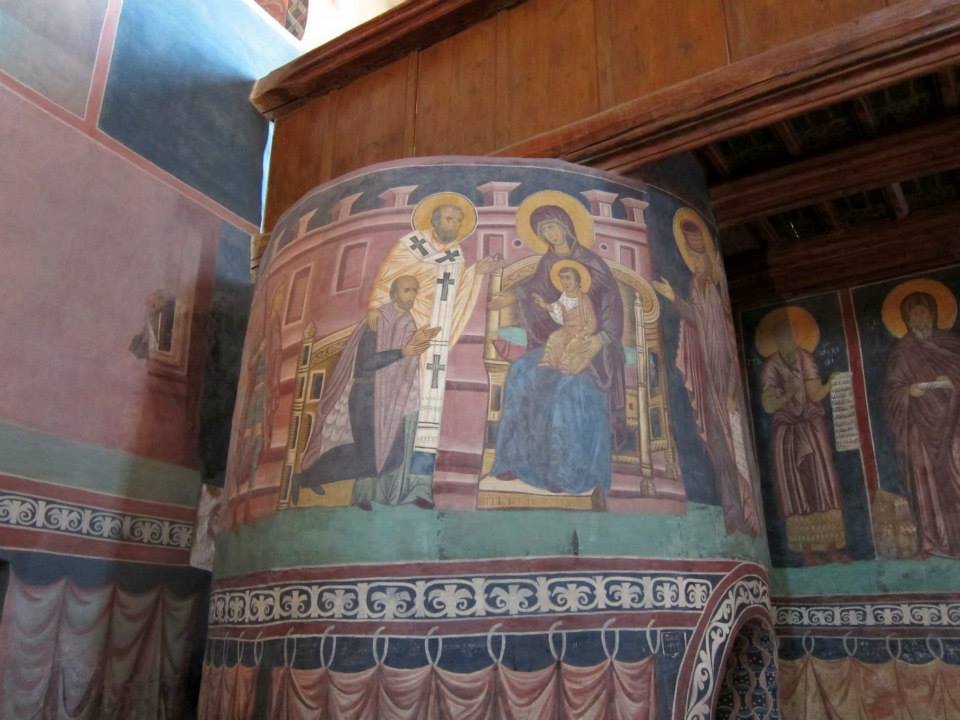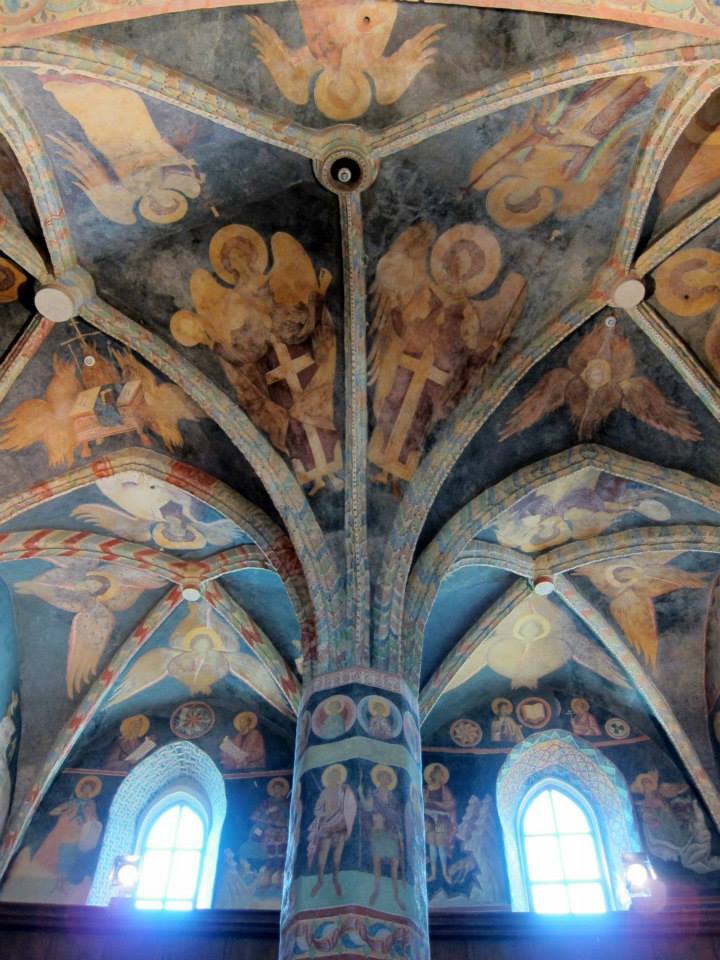The Holy Trinity Chapel Mural You Mustn’t Miss in Lublin Castle
In the early 15th Century, King Władysław II Jagiełło invited the Ruthenian master Andrej and his school to the Lublin royal castle to paint a mural that covered the Holy Trinity chapel from the floor to the vault. When the work was finished in 1418, Andrei signed his name on the arch and moved on, probably to the next commission.
The Holy Trinity Chapel mural
What the master left in the kaplica was nothing short of splendid. The icons and scenes combine the Eastern style of representation with the Gothic art and architecture of Catholic Poland. We came close to losing this unique example of sacred art, however.
By the 19th Century, the paintings had become so damaged by age, moisture and soot (from the altar candles) that somebody decided to cover them in plaster when the castle was turned into a prison. Even that did not last long. In 1899 a painter discovered a fragment of the old murals behind the crumbling plaster by chance. The intermittent uncovering and restoration of the paintings took nearly a hundred years while the conservators worked to stabilise the environment within the chapel, and the entire project was completed just 20 years ago.
Today, the interior of the Holy Trinity chapel is now climate-controlled. As a further measure, visitors are let in for just 20 minutes every hour. The murals should hopefully last a lot longer now, having survived 600 years of fires, wars and occupations.

In spite of the short viewing time, the chapel was the highlight of my visit to Lublin’s royal castle. There was plenty of space to admire the sacred art and none of the elbowing that one might expect at attractions of such importance to the world. One will probably get better photographs than I did by visiting in winter though.
To my traditionalist mind, it’s a shame that the original altar was removed. (It can be seen in the photographs exhibited outside the chapel) Other than that, the chapel looks the way it probably did centuries ago. Every surface is covered with a biblical scene, icons or the image of the king. A pamphlet is available to those who are not as well-informed about the iconography, but even without prior knowledge, it’s hard not to be blown away by the scale of the work.
One is left in little doubt about the identity of the donor of the chapel. Władysław’s coat of arms adorns the arch of the chancel while he mounts a white stallion above. In another scene, St Nicholas presents him to the Virgin Mary and the infant Jesus. I hope his prayers were answered.
Saints and martyrs tower over the landscapes, every one of them bearing the same serene expression. The Passion and other episodes from the gospels are fleshed out on the walls. Angels look down from the ceiling, and the Image of Edessa takes pride of place at the top of the chancel arch.
The figures are more stylised than (what we might now call) naturalistic, but the aesthetic of the restored murals is still beautiful. It manages to leave a lasting impression without the marble and the mosaics of larger churches. Who knows how much more wonderful it looked when it was new.
I doff my hat to thee, Master Andrej.
Don’t forget to check out Lublin’s other highlights and spend a moment to reflect at Majdanek. Or compare this chapel with Cologne’s cathedral, Amsterdam’s hidden church and Rome’s basilicas.



